Early Verdict
The Battle Box Ultimate, as we tested it, delivered superb AAA-gaming performance and multi-threaded muscle with its overclocked Ryzen 7 CPU and a GeForce GTX 1080 Ti graphics card. Though the chassis was plain, some braided cables and RGB/UV lights spruced things up.
Pros
- +
Fully configurable
- +
CPU overclocking included with cooler upgrade
Cons
- -
No GPU overclock
- -
Plain chassis
- -
Modest storage in test configuration
Why you can trust Tom's Hardware
Introduction & Product Tour
Traditionally, custom-PC makers send us their most pumped-up configurations based on Intel silicon. AVADirect, in a pleasant change of pace, sent us one of its Battle Box-branded custom desktop PCs with an AMD bent. Our test unit had an AMD Ryzen 7 1700X processor, 16GB of memory, and a GeForce GTX 1080 Ti under the hood.
Can the Battle Box deliver on its promise of ultimate frame rates and performance at the most demanding settings? We’ll find out as we take a look at our first AMD Ryzen-based custom gaming PC.
Exterior
The AVADirect Battle Box Ultimate is an Nvidia-co-branded gaming PC that can be customized to almost anything, with an array of different cases, chipsets, processors, graphics cards, memory, storage, and power supplies from all the major manufacturers. This particular configuration features an NZXT H440 mid-tower ATX chassis, which has black ABS plastic panels and a SECC steel frame. The removable side panels are also metal, and the window on the left side is made of clear acrylic. The solid panel has padding on the interior side to dampen vibrations, and the only customized parts of the chassis are an AVADirect decal on the window and an emblem on the bottom of the front panel. Otherwise, it’s no different from NZXT's retail H440 case.








The front and top panels have some vented red trim that provides airflow and an edgy look, and the NZXT logo is prominently displayed on the red-accented PSU cover that is visible through the side window, especially with the additional CableMod light strip that AVADirect outfitted in this test unit. (This flashy feature adds $60 to the bill; it's a custom remote-controlled RGB/UV strip.)
The top-panel I/O blends seamlessly into the smooth plastic and consists of two USB 3.0 and two USB 2.0 ports, in addition to headphone-out and mic-in audio jacks. The back of the machine also has gratuitous USB connectivity, with two USB 3.1 Gen2 ports (one Type-A, one Type-C), four USB 3.0 ports, and two USB 2.0 ports. There’s also a PS/2 port, six audio jacks (powered by a Realtek ALC892 NIC), and an RJ-45 interface that gets you online with Realtek 8111H Gigabit Ethernet.



The graphics card features three DisplayPort 1.3 interfaces and an HDMI 2.0 port. The motherboard’s DVI-D and HDMI ports don’t serve a purpose in this particular configuration (the CPU lacks integrated graphics), and you may have to get an adapter if you insist on using a DVI-D connection (say, with an older monitor).
Interior
Under the hood, this configuration of the AVADirect Battle Box Ultimate sports an AMD Ryzen 7 1700X processor on an MSI X370 Gaming Pro ATX motherboard with a 16GB (2 x 8GB) kit of Kingston HyperX Fury DDR4-2400 memory. The CPU is cooled by a Corsair H110i v2 (a 240mm AIO liquid cooler), and the processor comes overclocked at no charge when you purchase the cooling add-on, which tacks on $100 to the bill. (That's around the retail price for the H100i v2.)
Get Tom's Hardware's best news and in-depth reviews, straight to your inbox.



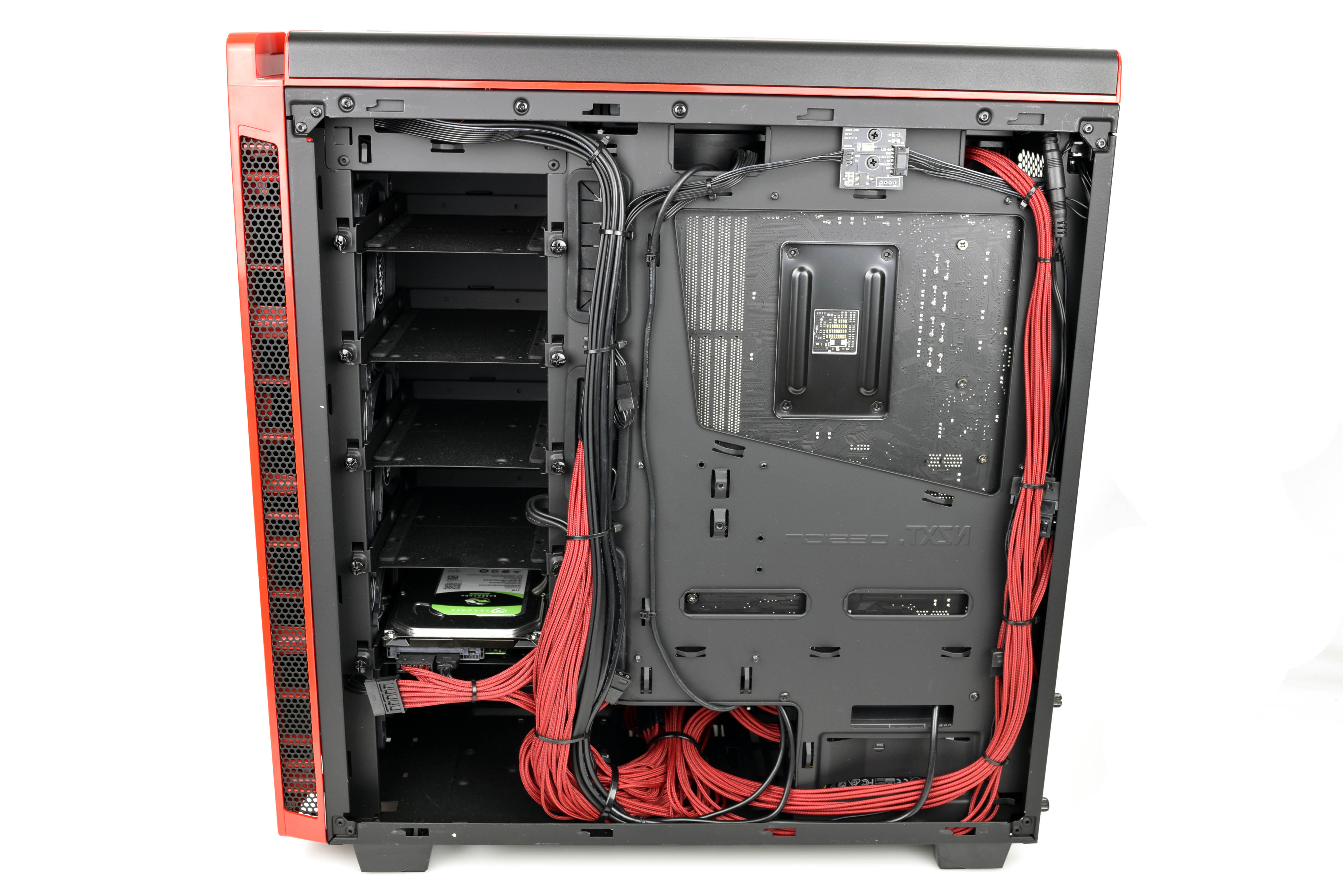
An Nvidia GeForce GTX 1080 Ti Founders Edition graphics card is seated in the motherboard’s primary PCI Express (PCIe) x16 slot, covering the M.2 interface and its attached 250GB Samsung 960 EVO NVMe SSD. This top-tier graphics card should provide the best frame rates in the latest AAA game titles, and the speedy primary storage should drastically reduce boot times and program load times. The low-capacity SSD won’t hold much more than a few games and productivity apps, though the 1TB 7,200RPM Seagate 3.5” hard drive should provide enough space for a moderate app and game library. The case also has plenty of 2.5” and 3.5” bays available to customize your storage the way you like.

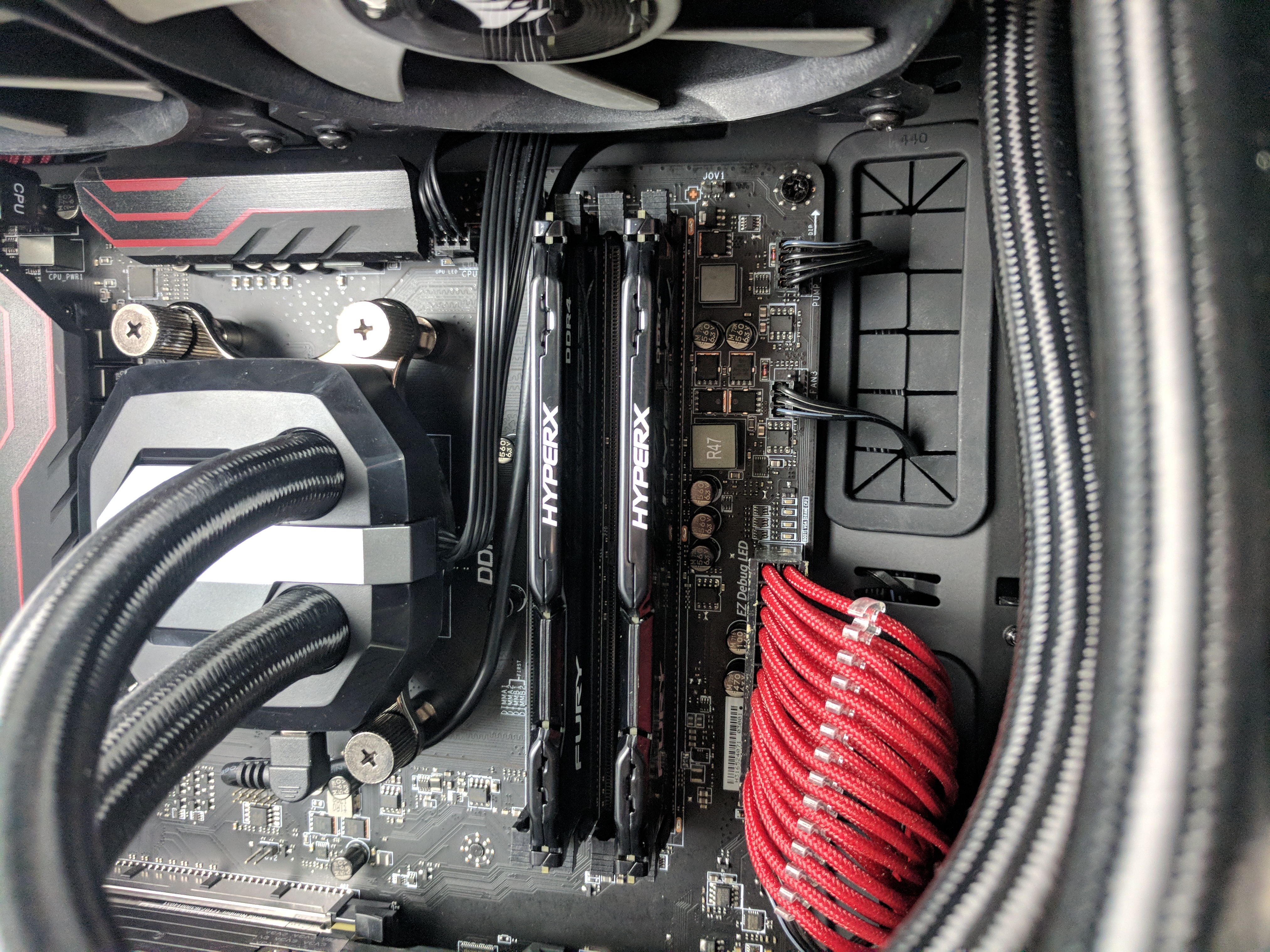
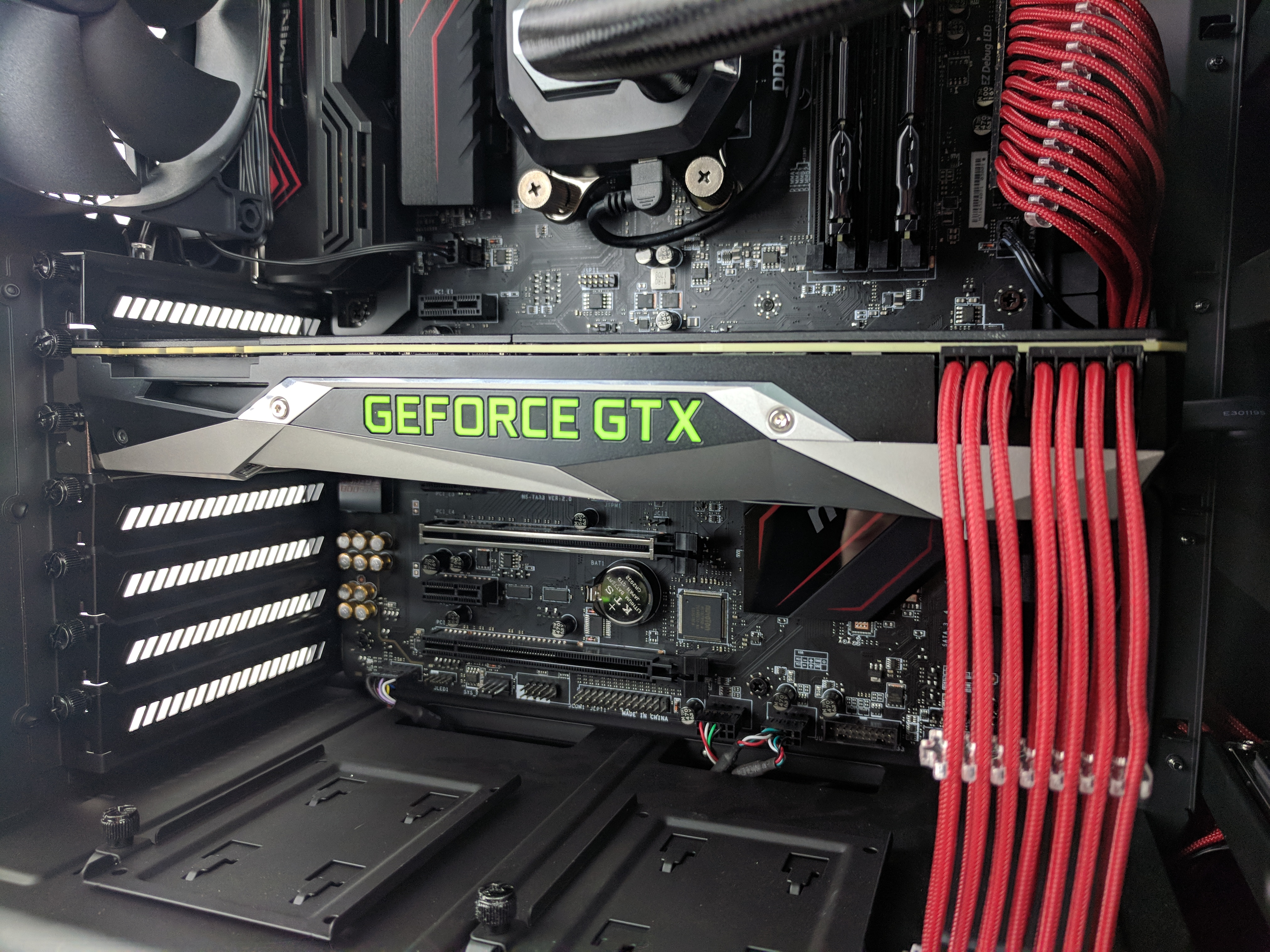


The 750W power supply (an EVGA Supernova G3 80 Plus Gold model) is hidden by the case shroud, and it has plenty of juice for the components inside. The case also sports a dust filter for the PSU that is easy to clean. AVADirect included a set of custom-design, individually braided PSU cables in red for the CPU, ATX, GPU, and SATA power connectors, which contributes a hefty $115 to the total bill. However, once again, this is around what you would pay for a set of these at retail.
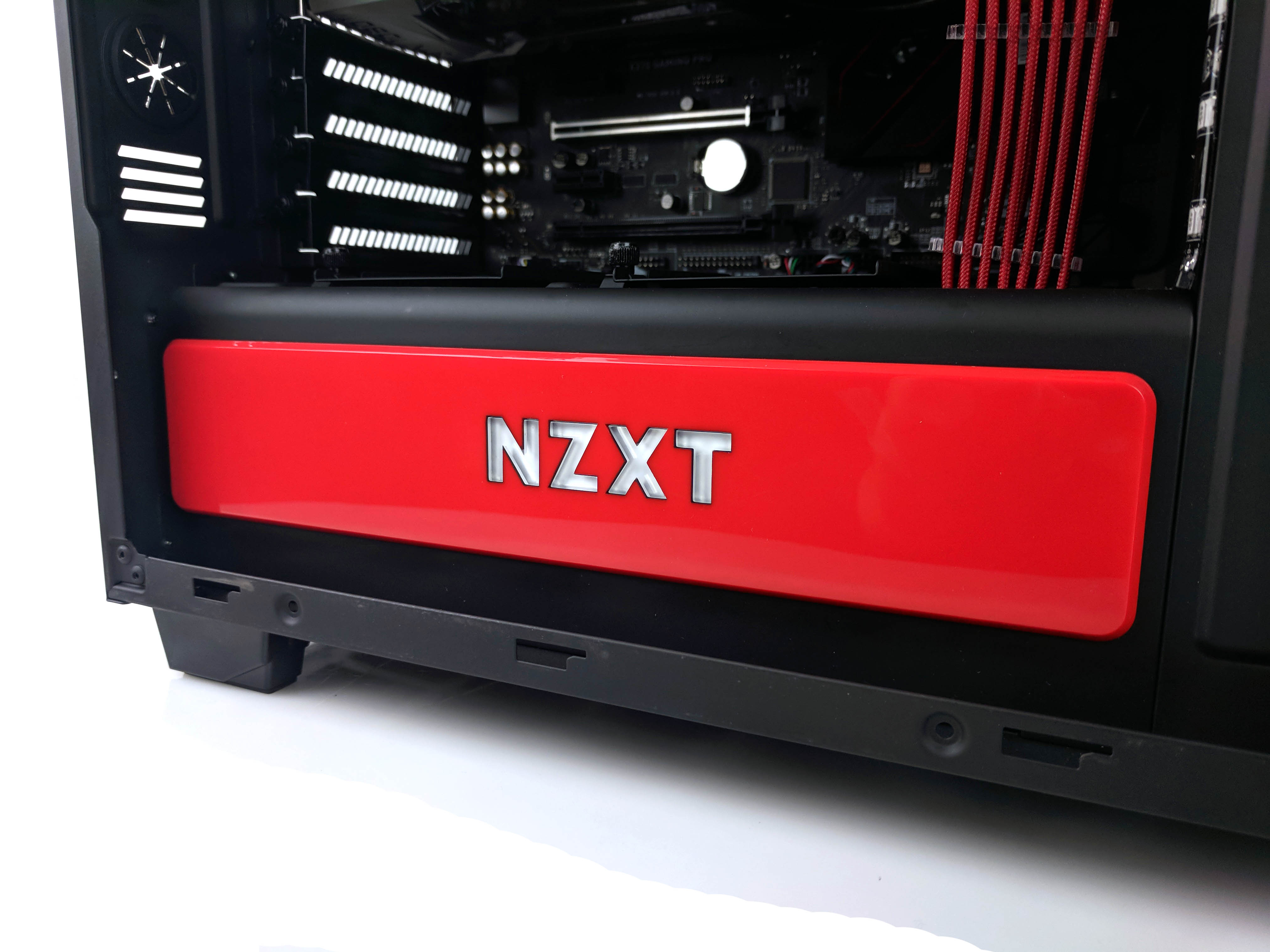





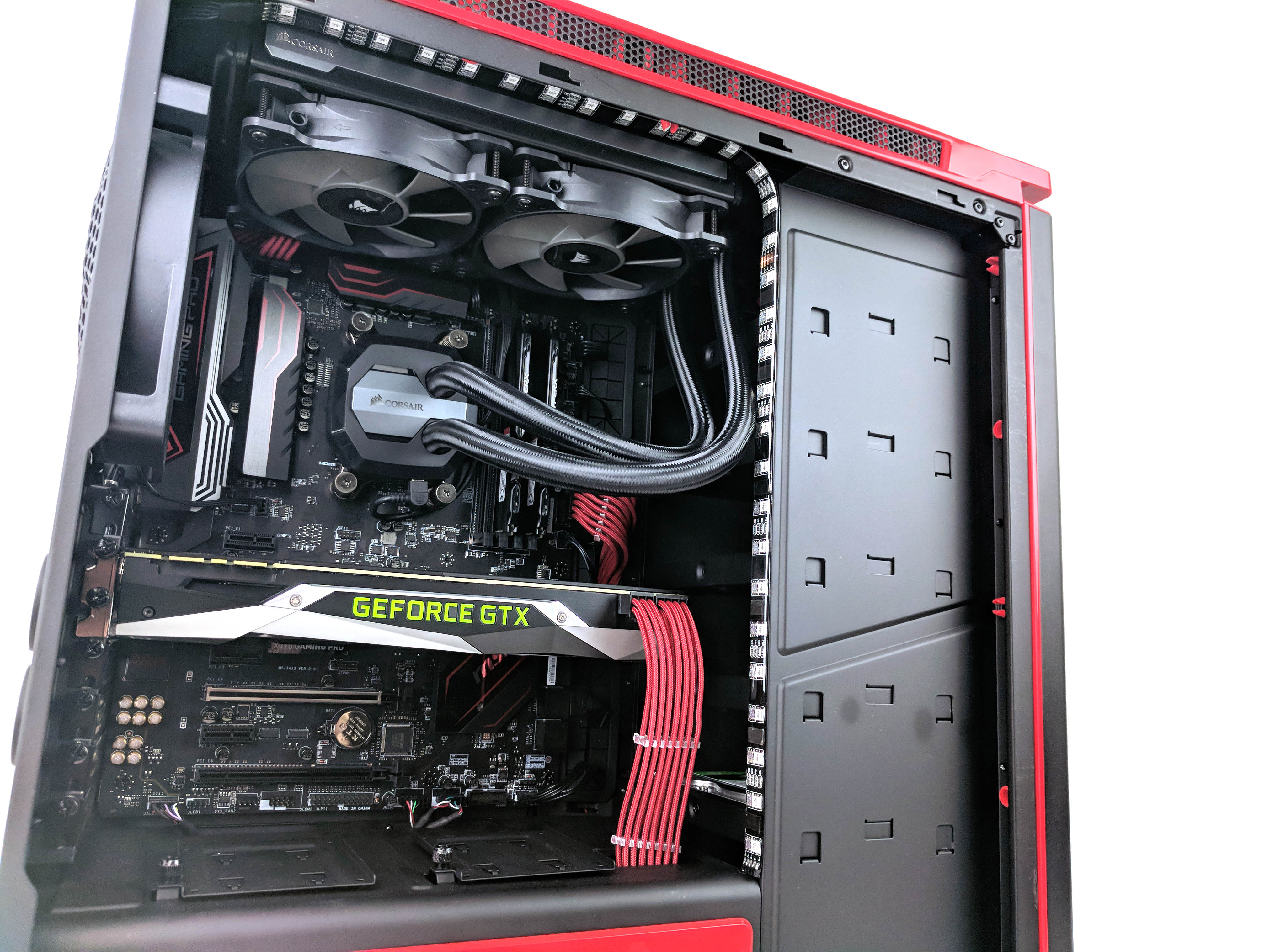

The interior is bathed in RGB/UV lighting by the custom CableMod light strips we mentioned, which are remote-controlled LEDs held on by magnets. They line the top side and inner wall of the chassis. This aesthetic bonus contributes $60 to the price, but as the only RGB lighting, it could be worth it if you’re looking to jazz up the otherwise plain components and chassis.
Software & Accessories
AVADirect’s Windows 10 Home 64-bit installation is as clean as a whistle. It completes the installation on the first boot and makes you create user accounts. There are no additional programs or bloatware (unless you count Microsoft’s usual offenders, such as Candy Crush), and this includes overclocking software. The CPU overclock is handled by the BIOS, which is set to an all-core multiplier of 38 for a peak 3.8GHz.
MORE: Best PC Builds
MORE: How To Build A PC
MORE: All PC Builds Content
Derek Forrest was a contributing freelance writer for Tom's Hardware. He covered hardware news and reviews, focusing on gaming desktops and laptops.
-
alextheblue Not a fan of that case. I'm assembling a PC for my nephew and this is the case he picked out... it's what he wanted. But I wouldn't use one myself. First thing I'd have to do is toss all the budget 3-pin fans and cheap fan hub. A good quality PWM fan is definitely better for smooth fan operation at varying RPMs. I don't need/want the LEDs. No optical drive bay doesn't bother me as much but he has really shoddy internet in the sticks so he'll need an external drive for Blu-ray/DVD. If he hadn't got the case a long time ago in preparation for a build, I'd be very tempted to have him return it just for the lack of optical bay.Reply
The interior layout seems alright. The whole thing feels a bit on the cheap side for the price. The front and top plastic panels just kind of pop off and make me cringe a little. The filters are good though. I can't deal with a case that doesn't have intake filters anymore. Back one is kind of a pain if your PC is tucked away at all. Wish more cases had their bottom filters accessible from the front of the chassis (slide in from the front, in other words). There's halfway decent room for additional cooling (you can add 3 x 120mm exhaust fans to the top or 2 x 140). The HDD mounts I might have to remove a couple for his GPU but that's no big deal, he's gonna have one spinner for secondary storage.
AVADirect DOES offer a TON of cases which I applaud them for, they even have the Fractal R5 chassis I was thinking about buying. But they're behind on GPU prices... pricing and availability are improving yet they're still asking like $390 for a basic RX 570. Newegg has em in stock for $300 and RX 580 for 340-350. When they launched I never thought I'd be so glad to see entry-level models at those prices... Seems like a bargain hehe... -
AgentLozen Replyalextheblue said:I don't need/want the LEDs.
I second that notion.
The rest of the computer is pretty solid though. If someone handed me this thing, I wouldn't hesitate to replace my current PC with it. -
techy1966 Great review and seems like a decent system. I know the case is pretty good since I just bought one for the wife's system upgrade. It actually came with two sets of top & front panels one set is pure black and the other has the red trim and black like this case does.Reply
The top and front panels are actually metal with plastic trim they are pretty heavy by them selves. The only complaint I had with the case was the side panels in the one side it is the clear plastic window the other side has the padding but you can clearly see that the fan controller has very little room since the foam gets scratched.
There was more than ample drive storage in the case which was nice to see but then again I think this case was released in either 2015 or 2016 and we still were able to buy cases with lots of storage room. As for the fan header it supports a lto fo fans and it connects to your CPU fan header to control all of the fans and actually works pretty good yes the fan headers on the controller are only 3 pin but that is not an issue since most case fans are 3 pin anyway. overall a good case it has a few cons but the pluses out weigh the cons any day. it is actually both wider & taller than my Antec 900 version 2 case which surprised me a bit but my case and system is still a lot heaver than the wife's system I guess the Antec has a lot thicker steel in it and of coarse my system has a lot more parts installed...:) -
alextheblue Reply
I was strictly referring to the case.20875908 said:The rest of the computer is pretty solid though. If someone handed me this thing, I wouldn't hesitate to replace my current PC with it.
The front panel seems like more plastic than metal, and it is held on entirely by plastic pins. I prefer something hinged, especially since you have to pull the panel to clean the filter. It's also a lot thinner (cheaper) than my Antec chassis. Feels a tad flimsy just picking it up and moving it around. For a fairly large steel case with a $140 MSRP ($120 ish typical cost) it's just so-so.20877126 said:Great review and seems like a decent system. I know the case is pretty good since I just bought one for the wife's system upgrade. It actually came with two sets of top & front panels one set is pure black and the other has the red trim and black like this case does.
The top and front panels are actually metal with plastic trim they are pretty heavy by them selves. The only complaint I had with the case was the side panels in the one side it is the clear plastic window the other side has the padding but you can clearly see that the fan controller has very little room since the foam gets scratched.
There was more than ample drive storage in the case which was nice to see but then again I think this case was released in either 2015 or 2016 and we still were able to buy cases with lots of storage room. As for the fan header it supports a lto fo fans and it connects to your CPU fan header to control all of the fans and actually works pretty good yes the fan headers on the controller are only 3 pin but that is not an issue since most case fans are 3 pin anyway. overall a good case it has a few cons but the pluses out weigh the cons any day. it is actually both wider & taller than my Antec 900 version 2 case which surprised me a bit but my case and system is still a lot heaver than the wife's system I guess the Antec has a lot thicker steel in it and of coarse my system has a lot more parts installed...:)
The fan controller is a tad cheap and 3-pin only. There's no getting around that. Have you compared 3-pin fans at a full range of RPMs via voltage control, vs a decent 4-pin PWM in the same circumstance? Good PWM fans seem to transition more smoothly and I notice less annoying sounds at varying RPMs. It's why (pre-PWM) I used to run fans either at fixed speeds or manually control them to find those ideal ranges.
Also someone online claimed that using the auxiliary (molex) power for that particular fan hub disables voltage control but I think he's incorrect. I'm pretty sure it just eliminates load on the mainboard header and maintains voltage control. I'll find out when I get more parts. I'm not hooking it up to my CPU header unless I have to, I would prefer to have the PWM CPU fan on that header. That might depend on the mainboard and controller though. I didn't look closely to see if it uses a 4-pin input or 3-pin. I've used a hub in the past that took the PWM signal and would vary voltage for 3-pin fans based on load, but if this takes only a 3-pin input that would require the board to be able to vary the voltage... maybe that's why they specify CPU header, maybe it's more common for that header to control both? Bah, I'll look at it again later. -
alextheblue Reply
Update: He was right. This fan controller is not very useful. It connects to a PWM fan header on the mainboard sure enough... but if you hook up the molex connector it runs the fans at 12V. The problem is there's too much of a load for a single header... so I can't really avoid using the aux power. If my nephew wants board-driven fan control, I may have to buy a better fan hub that will take a PWM signal and regulate voltage of 3-pin fans even when fed auxiliary power (Phanteks has a hub controller that can do this - PH-PWHUB 01).20881233 said:Also someone online claimed that using the auxiliary (molex) power for that particular fan hub disables voltage control but I think he's incorrect. I'm pretty sure it just eliminates load on the mainboard header and maintains voltage control.
I could just use a splitter or two but I don't believe this mainboard supports voltage regulation of 3-pin fans. Thus back to square one.